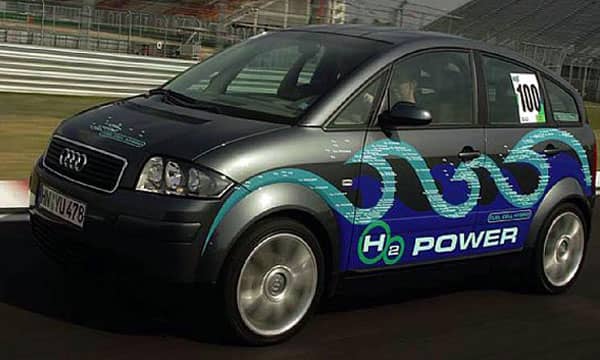Audi unveiled the first prototype of a fuel cell car at the Hanover Fair in 2004. With the A₂H₂ car, which was based on the Audi A2, the developers focused on sporty performance as well as efficient energy utilisation. For example, the car, which weighed around 1.4 tonnes, accelerated from 0 to 100 kilometres per hour in around 10 seconds and was therefore also a match for powerful turbodiesel models.
This excellent performance was down to the combination of a 66 kilowatt PEM fuel cell with a 38 kilowatt nickel-metal hydride battery. They combined to produce instantaneous power of around 110 kilowatts (150 hp). The electric motor was able to convert this energy into torque of up to 425 Newton metres – a figure normally only achieved by 8-cylinder combustion engines. This allowed the vehicle to accelerate from 60 to 120 kilometres per hour in 12.1 seconds. The top speed of 175 kilometres per hour was roughly equivalent to that of the production model.
When stationary, the battery supplied the power needed to start the fuel cell. During normal operation, this supplied power to the electric motor and any surplus was used to charge the battery. Energy was also drawn from the battery during acceleration, whereas braking energy was used to charge the battery.
The fuel used for the PEM fuel cell was gaseous hydrogen, which was stored in a three-part compressed gas tank under the boot. This only reduced the volume of the boot by a few litres. With a pressure of 350 bar, the tank could hold 1.8 kilograms of hydrogen, allowing a range of 220 kilometres.
The A₂H₂ served as the technological showpiece for the further development of fuel-cell drives. There was no plan for mass production.
